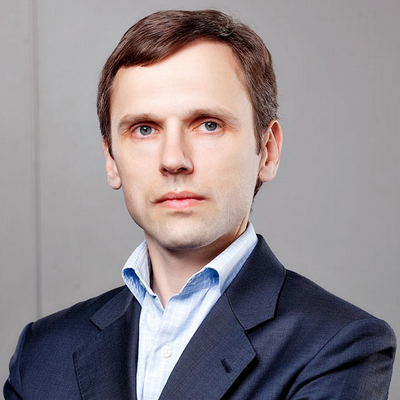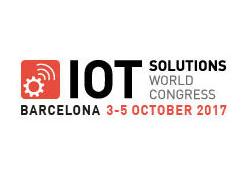A growing number if IT companies are working on developing new computing models equipped with innovative interaction methodologies that guarantee secure communications between humans, sensors and data analysis platforms.
Organisations such as Kaspersky Lab., IBM, Google, Microsoft and Intel, amongst others, have been investigating new procedures for increasing the computational power that supports IoT systems through quantum computing for some time now.
In the continuous technological evolution involved in the promotion and diversification of an increasingly extensive Internet of Things (IoT), which has emerged powerfully in industrial processes thanks to advances in data analysis, there is an equally powerful need to review and improve everything related to the security of communications if we want to continue moving forward in implementing the IoT ecosystem.
In the scenario of the future that points towards autonomous and connected ‘things’, security has become a crucial factor. This is where quantum cryptography – which uses the laws of quantum mechanics for generating secure codes – comes into its own, with the aim of guaranteeing secure end-to-end communications.

The versatile interactions that takes place in communications between people and machines have all the signs vulnerability from the point of view of security; a factor that emerges in view of the need for devices, sensors and IoT networks to be able to withstand the depth charge of computational and mathematical complexity used by the ever more frequent cryptographic attacks, bearing in mind the sophistication of the threats coming from whole communities of hackers operating from anywhere in the world.
The vulnerability of existing cryptographic keys against the computational power that is yet to come
Postquantum cryptography is set to be the next step to which the cryptographic algorithms generally used will have to adapt, which have been developed taking into account certain security parameters in order to protect information from attacks that may be perpetrated by the power that quantum computers will acquire in the future.
This is why post-quantum cryptography represents a step forward compared to the current use of cryptographic algorithms, which are highly vulnerable as they can be easily broken by an averagely powerful quantum computer.
The problem with commonly-used algorithms is that their security depends on three highly complex mathematical problems which, paradoxically, can be solved with relative ease by sufficiently powerful quantum computers.
Even the experimental quantum computers we know today are not powerful enough to attack any conventional cryptographic algorithm; however, more and more cryptographers are going for the design of new algorithms with a greater complexity load in order to be prepared for the time when the era of quantum computation becomes a reality.

Although they have not yet materialised, given the limited power of the early models currently in use, the threat of quantum computers is real, and so is the risk of some of them falling into the hands of hacking organisations. In the not-too-distant future a quantum computer will be built with enough power to be able to demolish all the security procedures we rely on today.
However, when the time comes to obtain the first quantum computer with high computational power, the new post-quantum algorithms must be in place and thus allow the secure infrastructures and technologies that have been developed in the last decade to continue operating securely with just a few minor changes.
In search of post-quantum algorithms that guarantee IT security
The Kaspersky security organisation predicts the disappearance of cryptography as we know it today in its blog. ‘Quantum computing may bring either salvation or doom to this emerging new world, although the way in which cryptography exists today will definitely lead to doom.’
The thesis that ‘cryptography is one of the very few fields where adversarial conflict continues to heavily favour the defender’ will be strongly contested until effective post-quantum cryptographic algorithms are introduced,’ continues the security organisation.
As well as defending the use of post-quantum algorithms in IoT security, the Russian cybersecurity firm has developed an operating system that it claims is ‘unhackable’, with the aim of increasing and protecting the security of systems, devices, sensors and networks.
Thus Kaspersky OS is an operating system that is currently installed in certain types of Layer 3 Switches that will provide high levels of security for data flows. The most notable feature of this operating system is that it is based on microkernel architecture, which means that it does not contain any Linux elements, allowing you to make assemblies of different blocks for each user to create their ideal version of the operating system.
‘Hacking this OS means having to break the digital signature, and this possibility is only within the realm of quantum computers. Another big difference in the Kaspersky OS is that it doesn’t use any Linux elements, which gives it the ability to control the behaviour of both the applications and the operating system itself,’, noted Eugene Kaspersky recently, the CEO of the company that bears his name, in a post published on his blog.

From the platform of IoTSWC2016, Andrey Nikishin, Special Projects director of Kaspersky Lab, warned in his speech about the danger represented by embedded security in communication systems.
‘In cyberspace, only the IoT represents the cyber-physical world, which in many cases suffers the consequences of a successfully perpetrated cyber-attack. An attack that would have had minimal repercussions if it had happened in IT architectures of static microkernel-based configurations,’ contended Nikishin.
The step from quantum theory to reality
Like Kaspersky, IBM has also put all its machinery into action to produce fully quantum equipment with the aim of offering IBM Q through its cloud computing network. To do so, it will take advantage of the IBM Quantum Experience project, a platform launched last year on a processor with five qubits.
Yet IBM and Kaspersky are not the only companies interested in quantum computing geared towards the IoT for industrial use; Microsoft, Google and Intel are also in the running with completely different approaches. Although if we abide strictly by the definition of quantum computing, it can be said that there is already equipment in existence.
This is the D-Wave, manufactured by the company of the same name, each unit of which sells for several million dollars. An example is the D-Wave 2000Q; the figure 2000 refers to the machine’s qubits which are stored within a complex refrigeration system.
With regard to the progress of firms such as D-Wave, Kaspersky acknowledges that quantum computing is well on the way to becoming a reality; nevertheless: ‘You still can’t actually touch one, but it’s good to see that there are quantum computing platforms out there.
This competition calls for a certain level of computing ingenuity, so most of the world’s population will have to wait. But with more and more major companies investing in the effort, such as Intel, IBM, Google and Microsoft, it seems inevitable that we will be seeing practical results,’ says the organisation in a post.
In short, what the cyber-security company wishes to stress, like other companies in the IT industry, is that the achievement of D-Wave is nothing more than a reflection of the fact that the quantum computing era is in its early days; everything is yet to come on the technological scene, given that it has not yet become a commodity, and represents a huge challenge in an emerging area such as the IoT ecosystem.
Intel’s approach to the quantum panorama for IoT entails major investment in the development of new models of computational elements formed by quantum computers that incorporate neuromorphic chips.
‘The potential of quantum computing is based on the huge capacity of quantum machines to harness a large number of qubits to perform multiple calculations in parallel; the modelling of neuromorphic chips follows a structure similar to that of the human brain, the aim being to help computers make decisions based on patterns and associations,’ said Brian Krzanich, the CEO of Intel, recently.

Microsoft is another of the big organisations devoting massive efforts to quantum computing projects. One of these is LIQUi|>, a research project in which a large number of QuArC developers (Quantum Architecture and Computation Group) from Microsoft Research have been investigating for more than a decade with the aim of creating a computer generation that is much more advanced than the current one, which promises to have a profound impact on the segment of IoT sensors.
Apart from QuArC, Microsoft’s Station Q lab, headed by mathematician Michael Freedman, is working on a project known as ‘Topological Quantum Computing’ which, according to the company, will offer a more stable performance than other quantum methodologies.
Somewhere in California, Google is building a machine which, according to the organisation itself, will revolutionise conventional computing processes. If this project – which could well see the light at the end of this year – is successful, the impact it could have on the industrial sector will be even greater, according to the company. Google’s objective is a very clear and simple one: to demonstrate once and for all that quantum computing can lead to the obsolescence of the most advanced supercomputers, and set the stage for the supremacy of quantum computing.
The debate about quantum computing and its evolution in the field of IoT for industrial use will form part of the programme of conferences at the IoT Solutions World Congress 2017, which has already become the global benchmark for the Industrial Internet of Things (IIoT).
This event will also address topics such as artificial intelligence, blockchain, big data, digital transformation, cloud computing, robotics, sensors, security, smart objects, standards, new business models, data storage and analytical prediction.
Comment on this article below or via Twitter: @IoTNow_ OR @jcIoTnow










